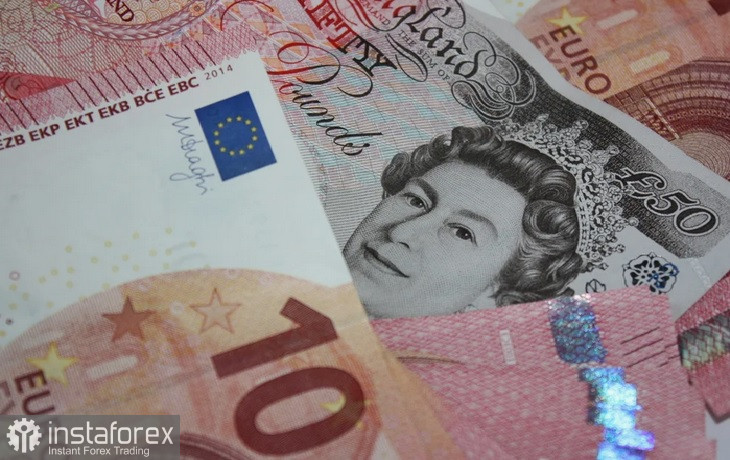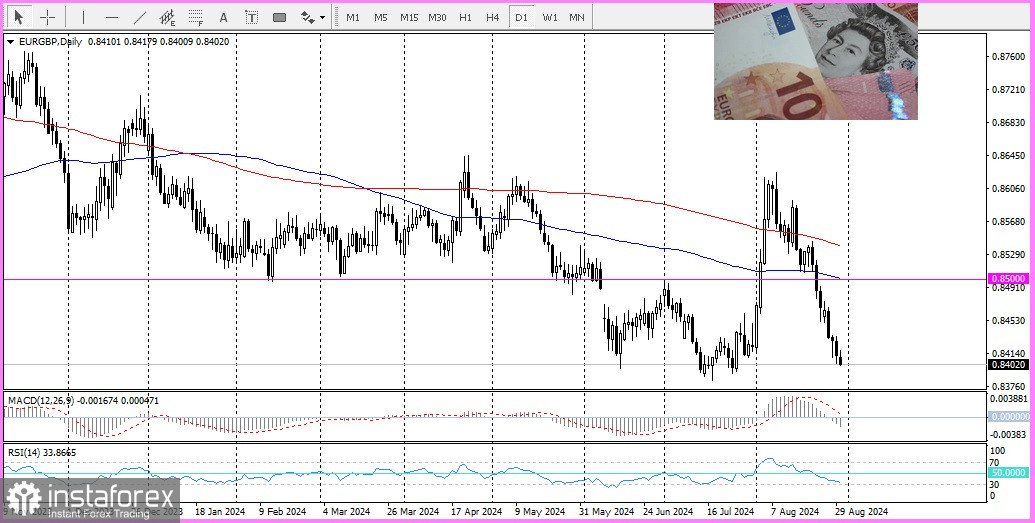
The EUR/GBP pair is still struggling, continuing its losing streak.
There's a good chance that the EUR/GBP pair will keep dropping. The British pound is getting a boost from the Bank of England's firm stance on keeping interest rates higher for longer compared to the European Central Bank.
At the Jackson Hole symposium last week, Bank of England Governor Andrew Bailey pointed out that the knock-on effects of inflationary pressures might be less significant than previously thought. He also advised against rushing into further interest rate cuts. Earlier, on August 1, the Bank of England had already cut rates by 25 basis points, bringing them down to 5%. Meanwhile, money markets are expecting another 40 basis point cut by the end of this year.
In the UK, house prices rose by 2.4% year-on-year in August, up from July's 2.1%. This was the sixth straight month of price increases and the biggest jump since December 2022. But in a surprising twist, monthly house prices actually dipped by 0.2% after a 0.3% rise in July, despite market expectations of a 0.3% increase.
Turning to the euro, inflation in the Eurozone slowed even further in August, according to CPI data from Germany and Spain. This slowdown has led to growing expectations that the European Central Bank might cut interest rates, which is putting pressure on the euro and dragging down the EUR/GBP pair.
Carsten Brzeski, Head of Macroeconomics at ING, called the slowdown in inflation great news for the ECB. He pointed out that the combination of an economic slowdown and decreasing inflation provides the perfect backdrop for rate cuts. However, he also cautioned that inflation in the services sector is still a concern.
Today, it's worth keeping an eye on the Eurozone CPI, as it could offer more clues about the health of the Eurozone economy and create new trading opportunities.
From a technical perspective, the indicators suggest that the path of least resistance for the pair remains downward, with oscillators in negative territory and far from oversold levels.
 English
English 
 Русский
Русский Bahasa Indonesia
Bahasa Indonesia Bahasa Malay
Bahasa Malay ไทย
ไทย Español
Español Deutsch
Deutsch Български
Български Français
Français Tiếng Việt
Tiếng Việt 中文
中文 বাংলা
বাংলা हिन्दी
हिन्दी Čeština
Čeština Українська
Українська Română
Română

